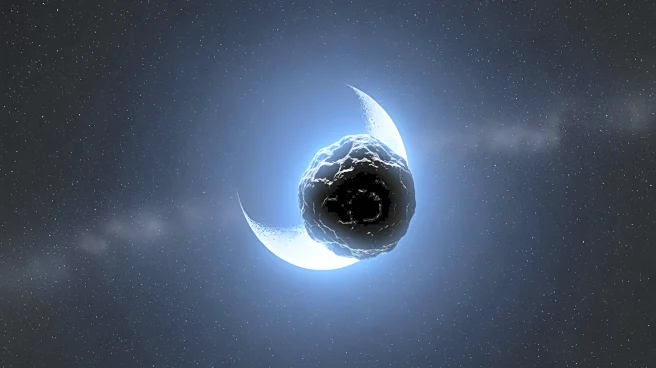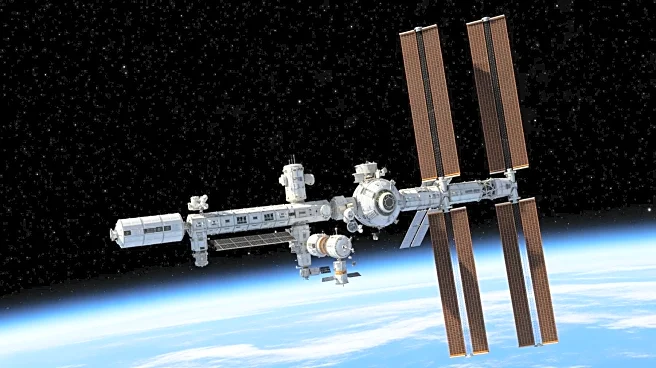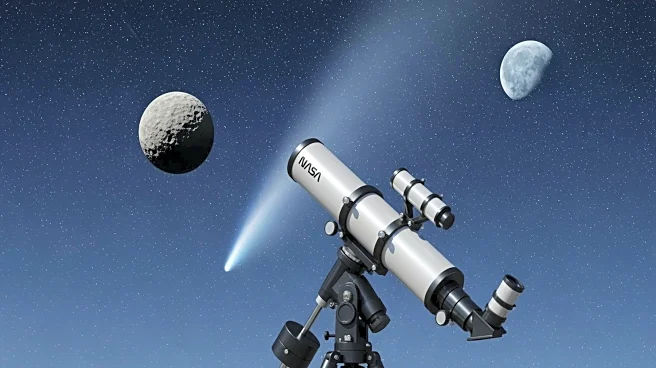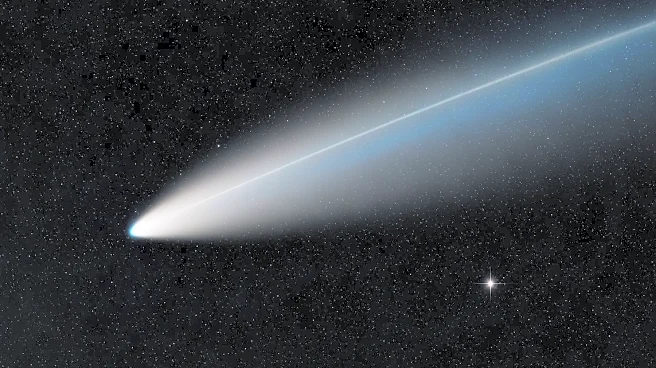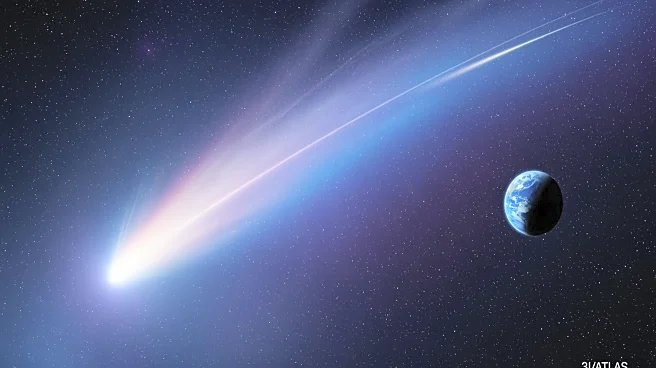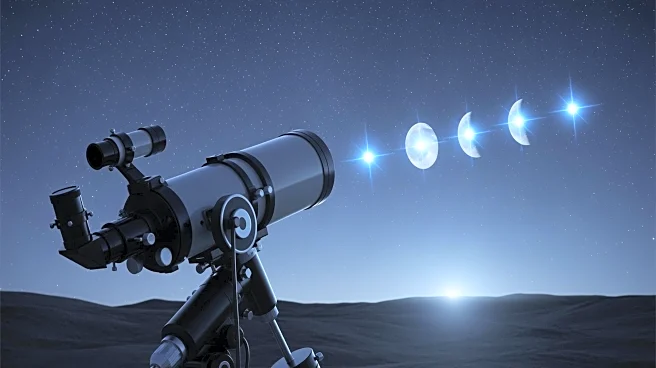What's Happening?
NASA has identified an asteroid, designated 2024 YR4, which could potentially collide with the Moon on December 22, 2032. Initially discovered by the Asteroid Terrestrial-impact Last Alert System (ATLAS)
in Chile, the asteroid is approximately the size of a 15-story building. While early models suggested a 3% chance of impacting Earth, further observations have ruled out this possibility, instead indicating a 4% chance of striking the Moon. The potential impact poses no threat to Earth, as any debris would burn up in the atmosphere. However, it presents a unique opportunity for scientific observation, allowing researchers to study the spread of debris and the Moon's energy absorption during such events.
Why It's Important?
The potential collision of asteroid 2024 YR4 with the Moon is significant for scientific research, as real-time observation of such impacts is rare. This event could provide valuable insights into the processes that have shaped the solar system. For NASA, it represents a chance to study the Moon's surface dynamics and the behavior of cosmic debris. Additionally, the asteroid's discovery and subsequent tracking have tested and validated NASA's planetary defense systems, demonstrating the ability to quickly refine orbital predictions and coordinate international observation efforts. This capability is crucial for future planetary defense strategies.
What's Next?
Astronomers plan to observe asteroid YR4 again in 2028 to gather more precise data on its shape, composition, and trajectory. These observations will help refine predictions about its path and potential impact on the Moon. Even if the asteroid misses the Moon, it will continue to pass near the Earth-Moon system throughout the 2030s, providing ongoing opportunities for study. The event underscores the dynamic nature of our solar system and the importance of continued vigilance and research in planetary defense.
Beyond the Headlines
The potential impact of asteroid 2024 YR4 on the Moon highlights the ongoing vulnerability of celestial bodies to cosmic events. It serves as a reminder of the dynamic and ever-changing nature of the solar system, where even seemingly stable entities like the Moon are subject to change. This event could also inspire public interest in space science and planetary defense, emphasizing the need for continued investment in space observation and research.
